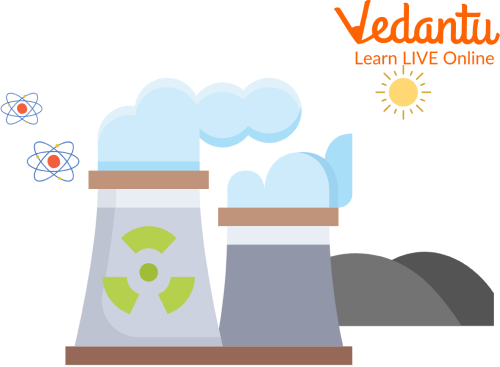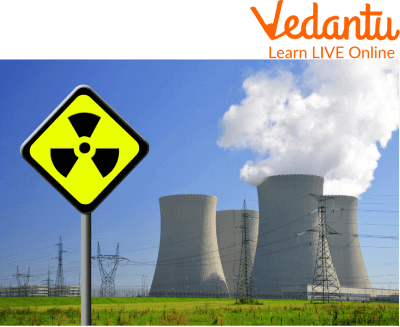




Overview of Nuclear Energy
For many years, the increase in electricity consumption has exceeded the increase in final energy demand. Rising power demand is primarily a result of the increased digitisation of end users, including transportation, space cooling, major appliances, ICT, and others. There are now far fewer individuals without access to power than one billion.
About 10% of the world's power is generated by nuclear power, a recognised component of the global electrical mix. It is especially suitable for supplying continuous, large-scale energy demand where dependability and predictability are crucial, making it the perfect complement for the global urbanisation trend. Let’s find out more exciting things about it!
What is Nuclear Energy?
Nuclear or atomic energy is the force that maintains the integrity of an atom's nucleus. The fundamental building components of matter are atoms. The core of an atom is its nucleus. Nuclear energy transforms into different forms of energy as it is released. These energy types are referred to as radiation. Radiation can take the form of heat or light.
Nuclear fusion and nuclear fission are two methods for releasing nuclear energy. Nuclear fission occurs when an atom's nucleus breaks into several pieces. When two nuclei combine to form a true nucleus, nuclear fusion takes place. Some atoms' nuclei have the ability to release nuclear energy without fissioning or fusing. We refer to these atoms as radioactive.

Nuclear Energy
Stars, like the Sun, naturally undergo nuclear fusion. Nuclear energy is constantly being produced by the atoms there. The energy and light the Sun emit toward Earth come from that energy.
Scientists found that they could induce nuclear fission in specific types of atoms in the 1930s. They made their finding while experimenting with uranium atoms. By blasting uranium atoms with neutrons, they could divide the nucleus in half. A lot of energy is released during nuclear fission. For instance, burning 3,000 tonnes of coal would require as much energy as fissioning 1 pound (0.5 kilograms) of uranium.
Example of Nuclear Energy
Given below are some examples of nuclear energy:
1. Treatments in Food
Nuclear energy and technologies are employed in the food and agricultural industries to improve safety and efficiency. To limit the need for insecticides, agricultural pests are sterilised using nuclear-related technology.
2. Nuclear Medicine
Some byproducts produced by nuclear fission in reactors are crucial for some medical fields. For instance, hospitals employ cobalt-60 to clean complex medical equipment, such as implants, catheters, and scalpels, as well as other types of technology.
3. Exploration of Space
Deep space exploration can be powered by nuclear energy through generators. Before being destroyed in 2017, the Cassini-Huygens probe used a Radioactive Isotope Thermoelectric Generator (RTG) to study Saturn.
4. Electricity
When considering nuclear energy, you probably picture how nuclear fission fuel is employed to produce electricity. This is accomplished in a nuclear power plant during the reactor's splitting of uranium.
5. Nuclear Weapons
Weapons like the atom or hydrogen bomb also come to mind when thinking about nuclear energy. These bombs produce a potent explosion that can quickly level enormous areas using nuclear fusion and fission.
Who Discovered Nuclear Energy?
In the 1930s, scientist Enrico Fermi first demonstrated how neutrons could divide atoms, which gave rise to the concept of nuclear power. At the University of Chicago, Fermi oversaw a team that, in 1942, created the first nuclear chain reaction beneath a stadium.
The Obninsk Nuclear Power Plant in the USSR produced about 5 megawatts of electricity on June 27, 1954, making it the first nuclear power plant in the world to provide electricity for a power grid.

Generation of Nuclear Energy
Summary
Nuclear energy is a type of energy that comes from the nucleus, or core, of an atom. It was first discovered in the early 1900s by scientists studying radioactivity. Today, nuclear energy is used to generate electricity, treat cancer and other medical conditions, and research purposes. It also has applications in the military, such as in nuclear weapons. We read about nuclear energy for kids in this article, and we also looked at some nuclear energy images.
FAQs on Nuclear Energy for Kids
1. How long will nuclear power be used?
The measured uranium reserves today (6.1 Mt), which are solely used in traditional reactors and priced at less than 3 times current spot prices, are sufficient to endure for around 90 years.
2. How are lives saved by nuclear energy?
Nuclear energy helps replace fossil fuels and provides large amounts of carbon-free electricity, which protects the air quality in the atmosphere. This is how lives are saved by nuclear energy.
3. Do nuclear power plants emit pollution?
No. Nuclear energy, a clean energy source with zero emissions, safeguards our air quality. Nuclear fission doesn't produce the harmful byproducts that coal, oil, and natural gas do when they produce power.









